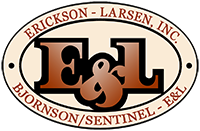Homeowner Associations come in all shapes and sizes, from condominiums and townhouses, apartment-style buildings or attached homes to single-family dwellings or a combinations of these, we have markets to help you provide the best insurance protection. These various arrangements can all benefit from forming an association. Members are accessed a monthly or annual fee for maintenance of common grounds.
A significant exposure is community property owned by an association rather than one individual homeowner. Examples of such property are parks, playgrounds, swimming pools, walking paths and streets within developments, etc. Additional exposures exist on common ground that may have been there long before homes were built. These can include lakes, rivers, trees, drainage ditches and more. Every member of an association could be held responsible for these exposures and would benefit from the protection an association liability policy could provide. Since association liability policies do not protect them individual members for their individual owned premises, they need to look to their own homeowners’ coverage.
Not only is there a need for liability and property coverage, there is also exposures for the association board that need to be addressed. A Directors and Officers policy could help in protecting the individuals on the board that are responsible for decisions on behalf of the association and their members.
Owners of commercial property can also form a condominium association for buildings and premises within a development. Their members benefit by not being individually responsible for lawn care, snow removal, and other maintenance on community grounds.
Erickson-Larsen, Inc. and Bjornson/Sentinel-E&L have a variety of markets for homeowner and commercial associations. We can help with General Liability, Property and D&O among other ancillary coverages. Contact our expert team today!
Disclaimer: This article is intended for general information purposes only. The information contained is not intended to constitute and should not be considered legal or professional advice, nor does it represent that coverage does or does not exist for any particular claim or loss under any policy.


